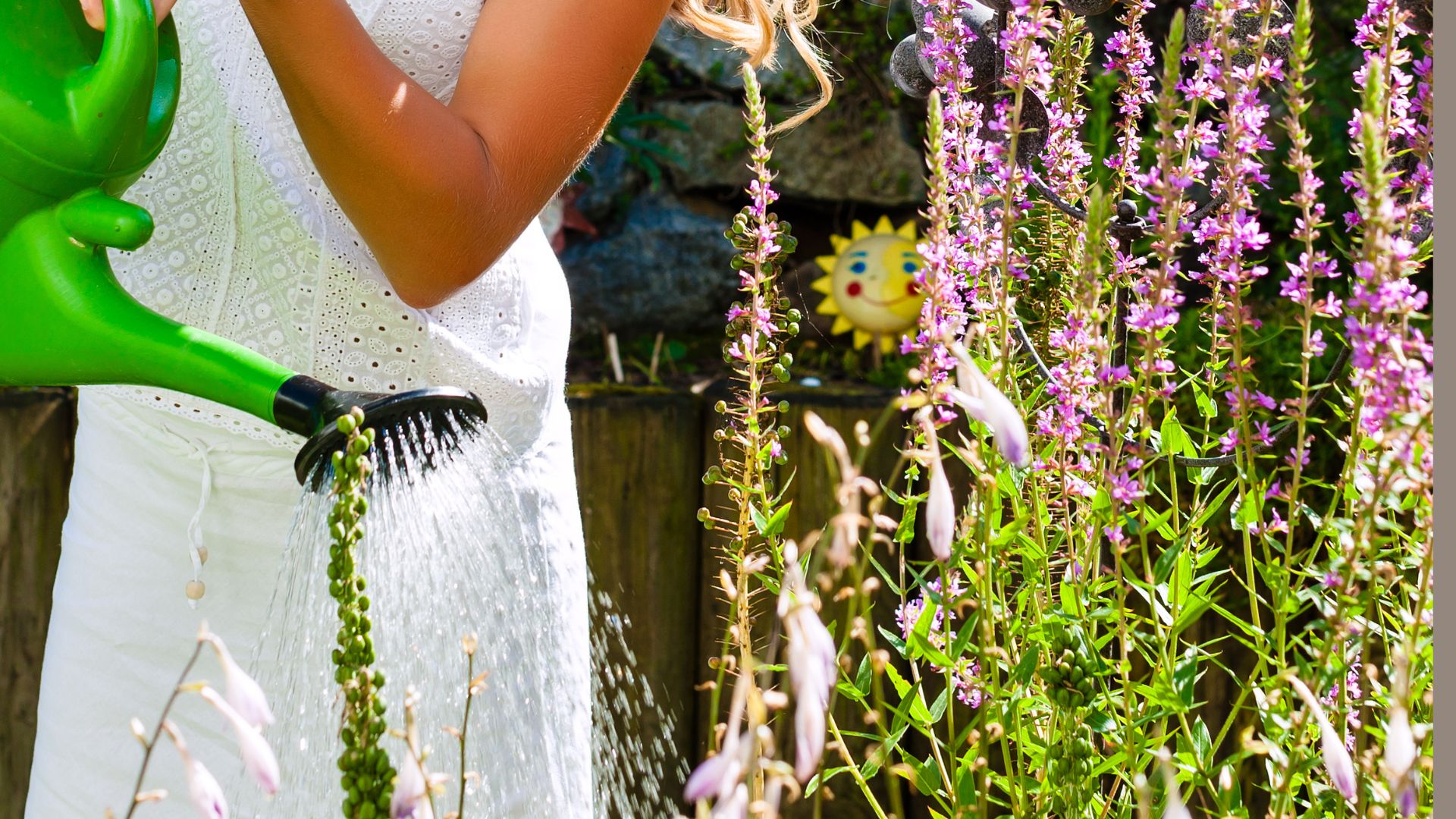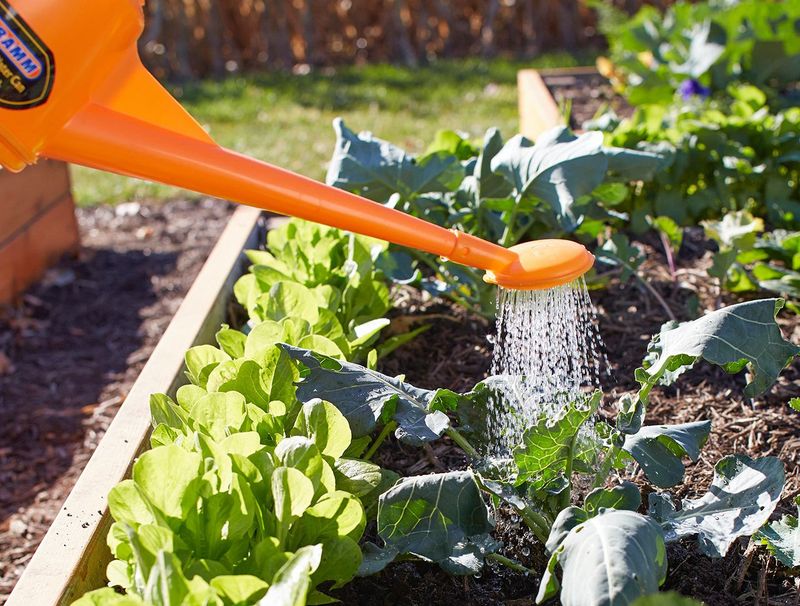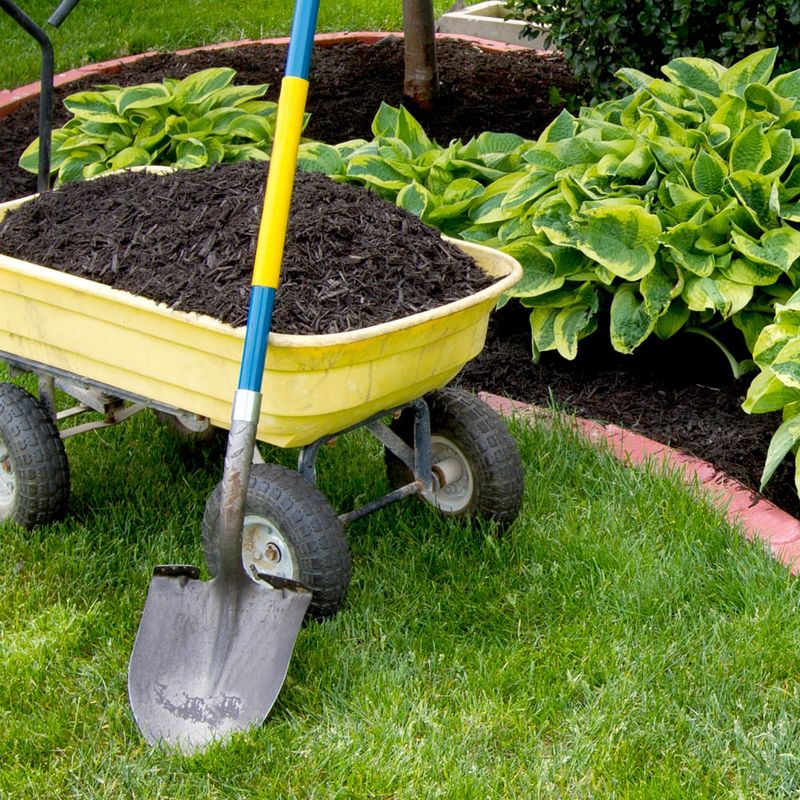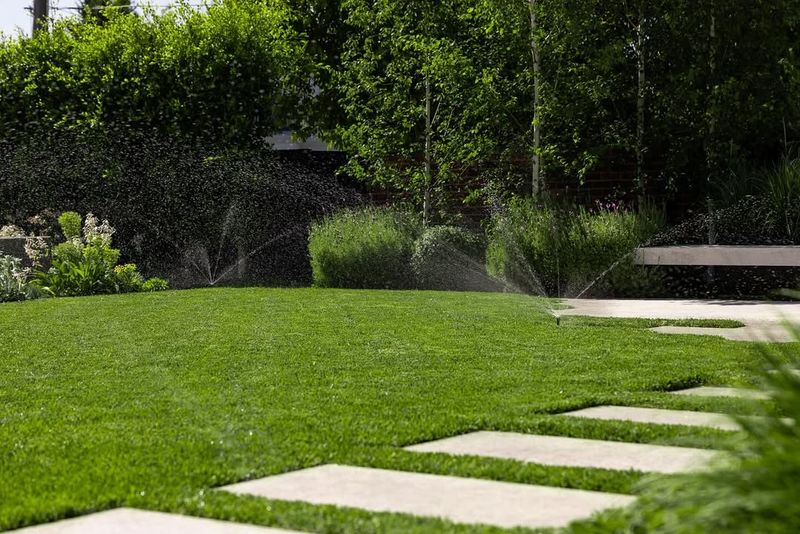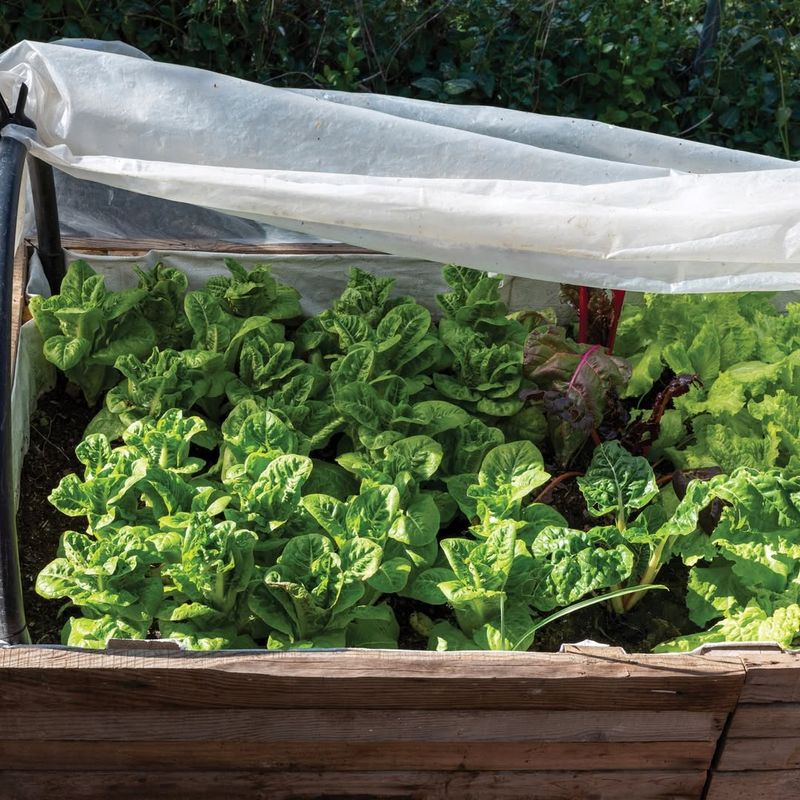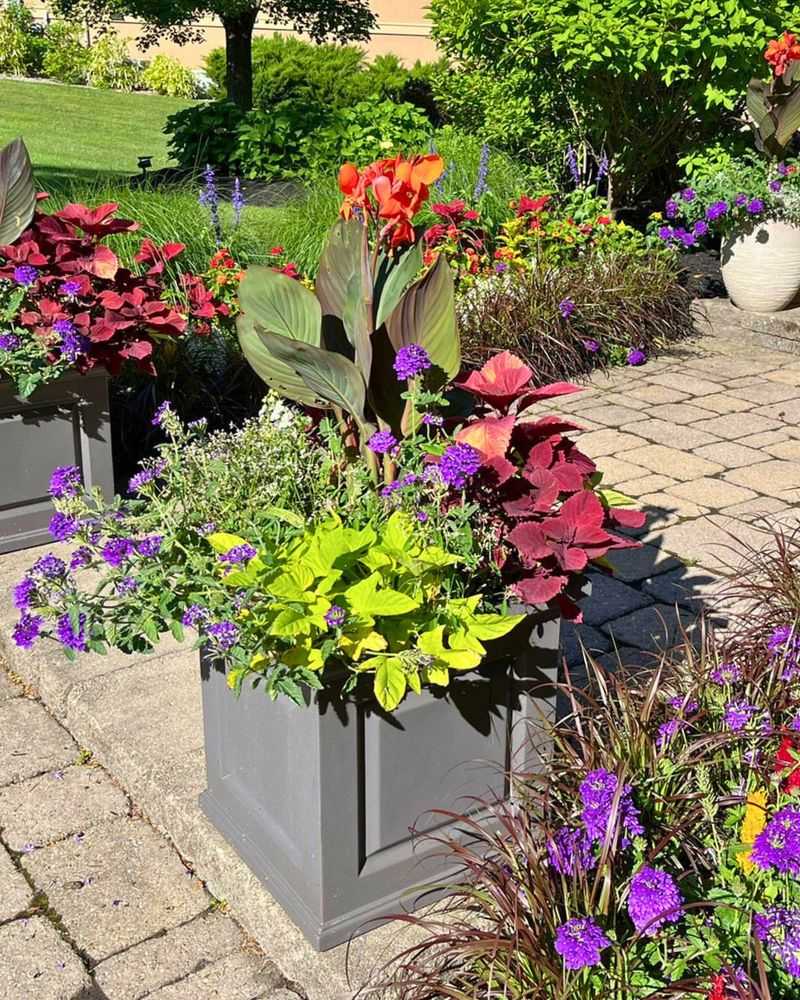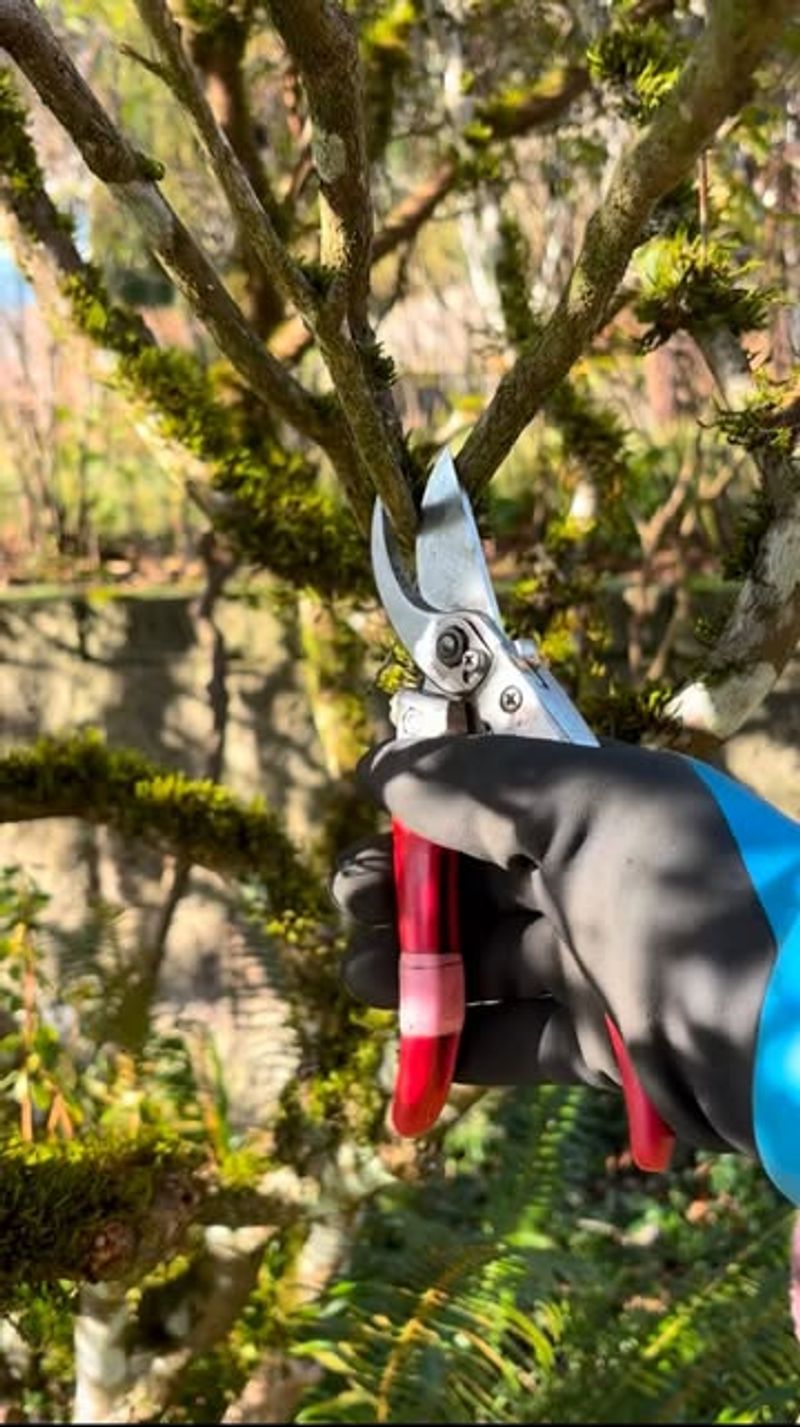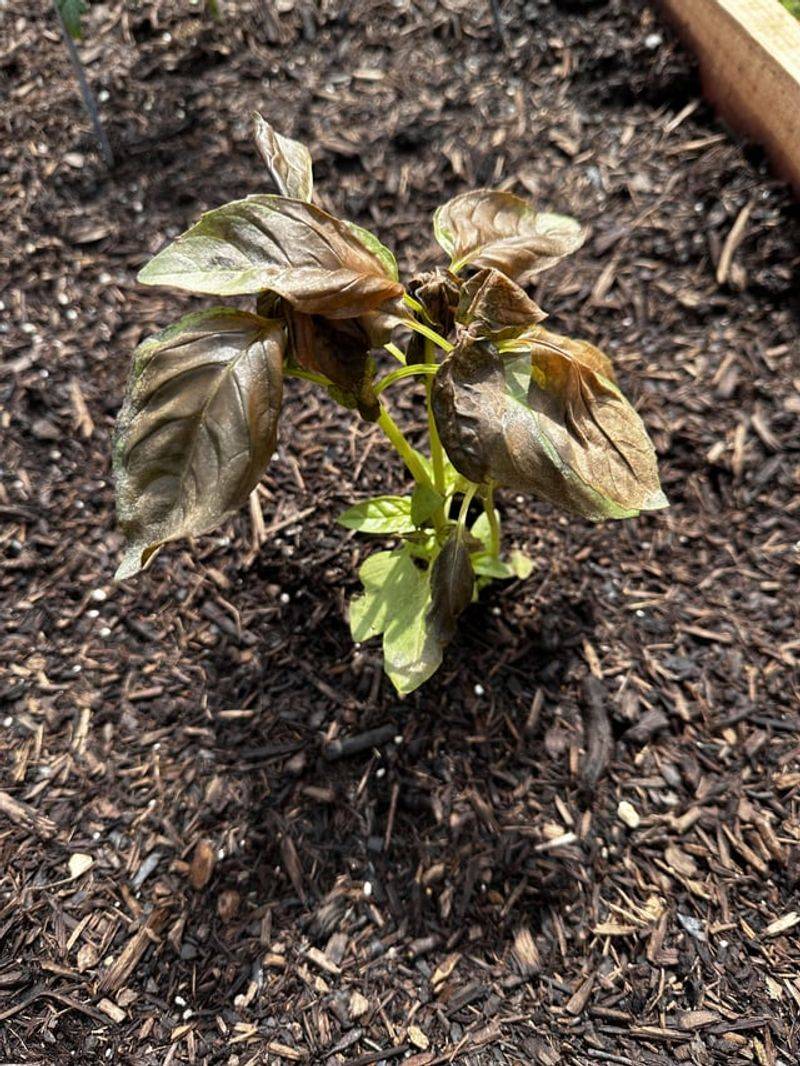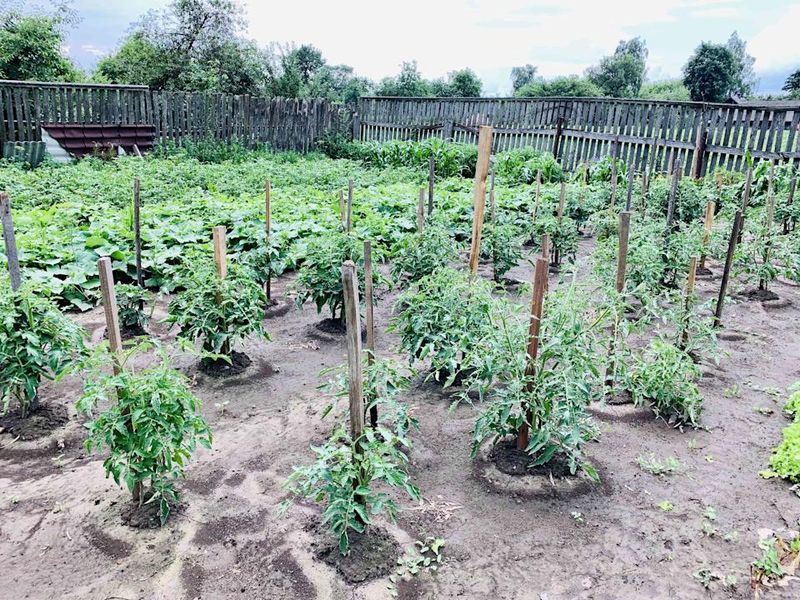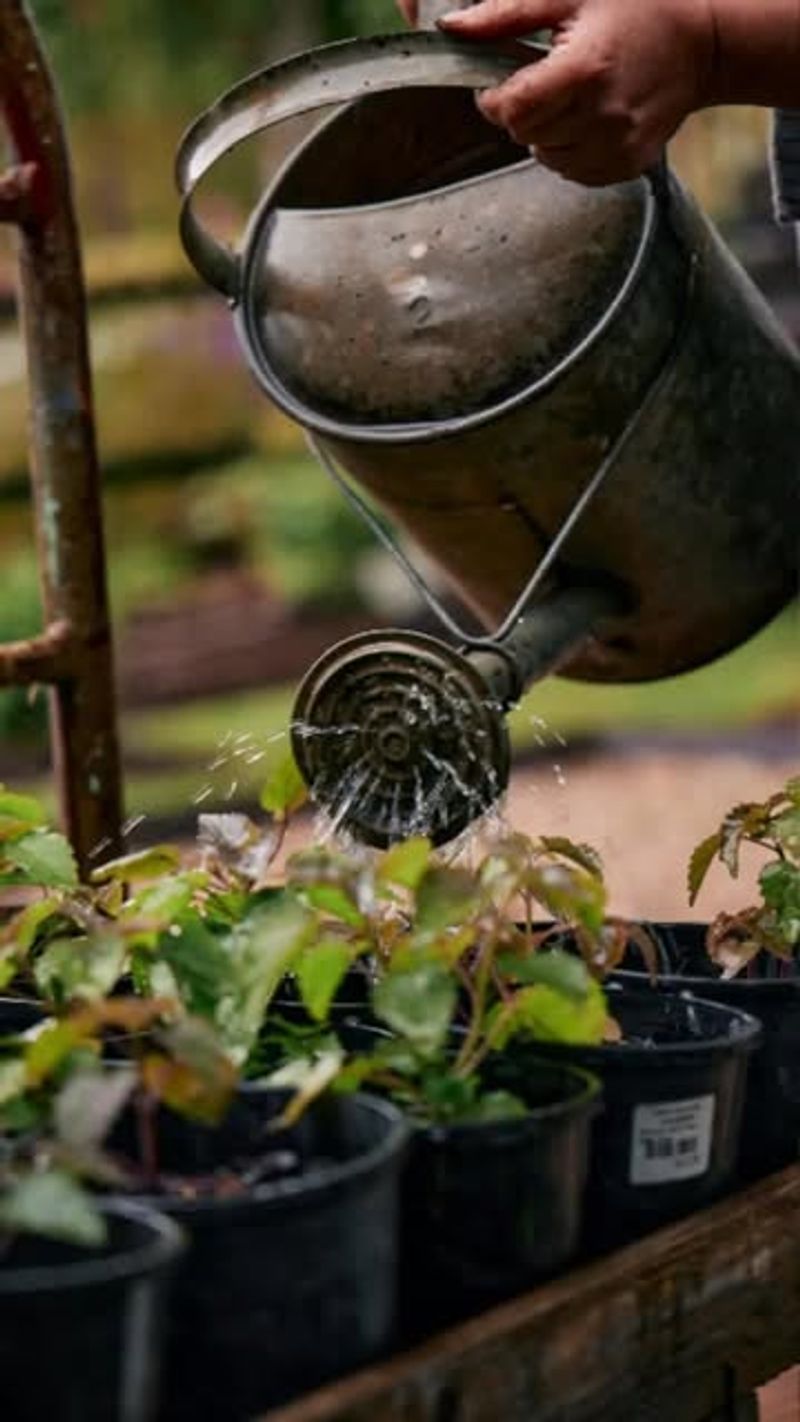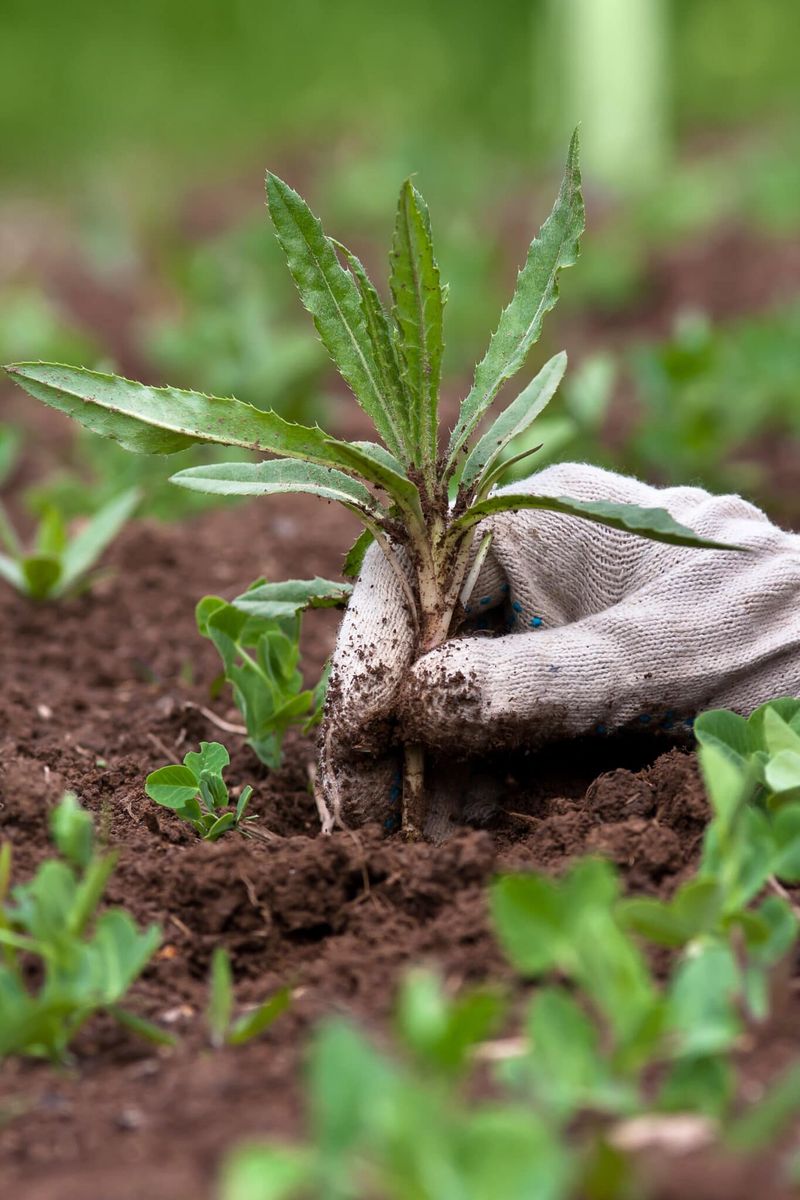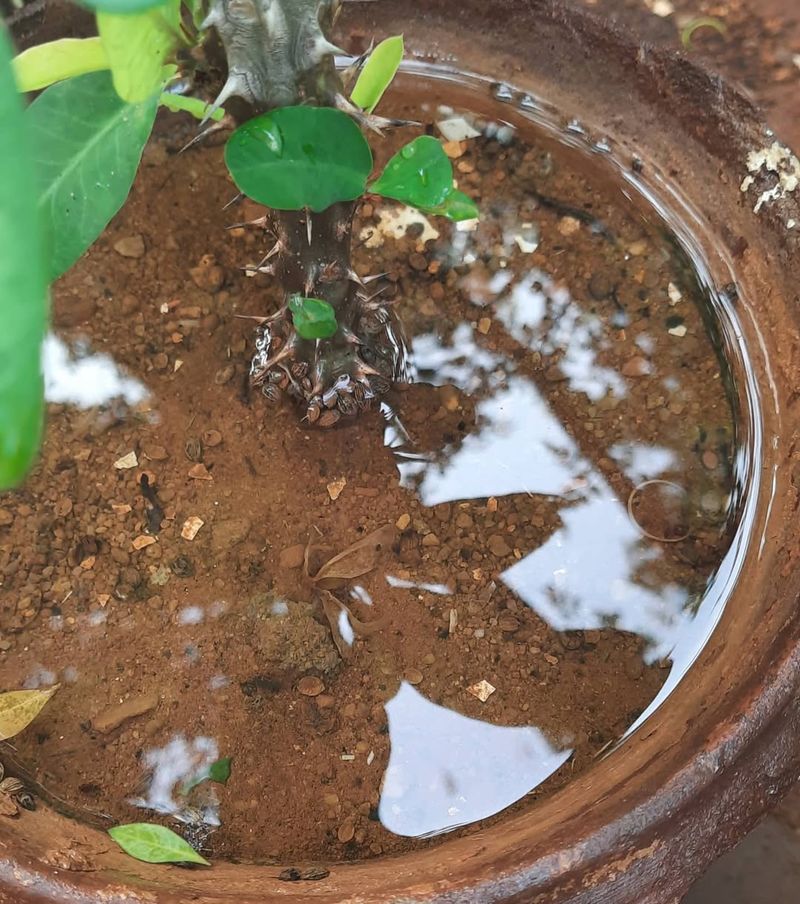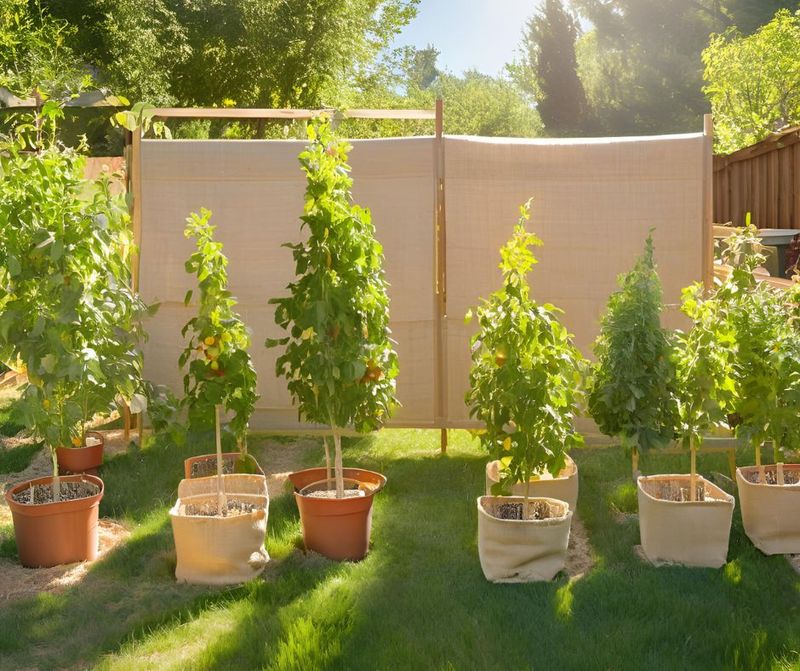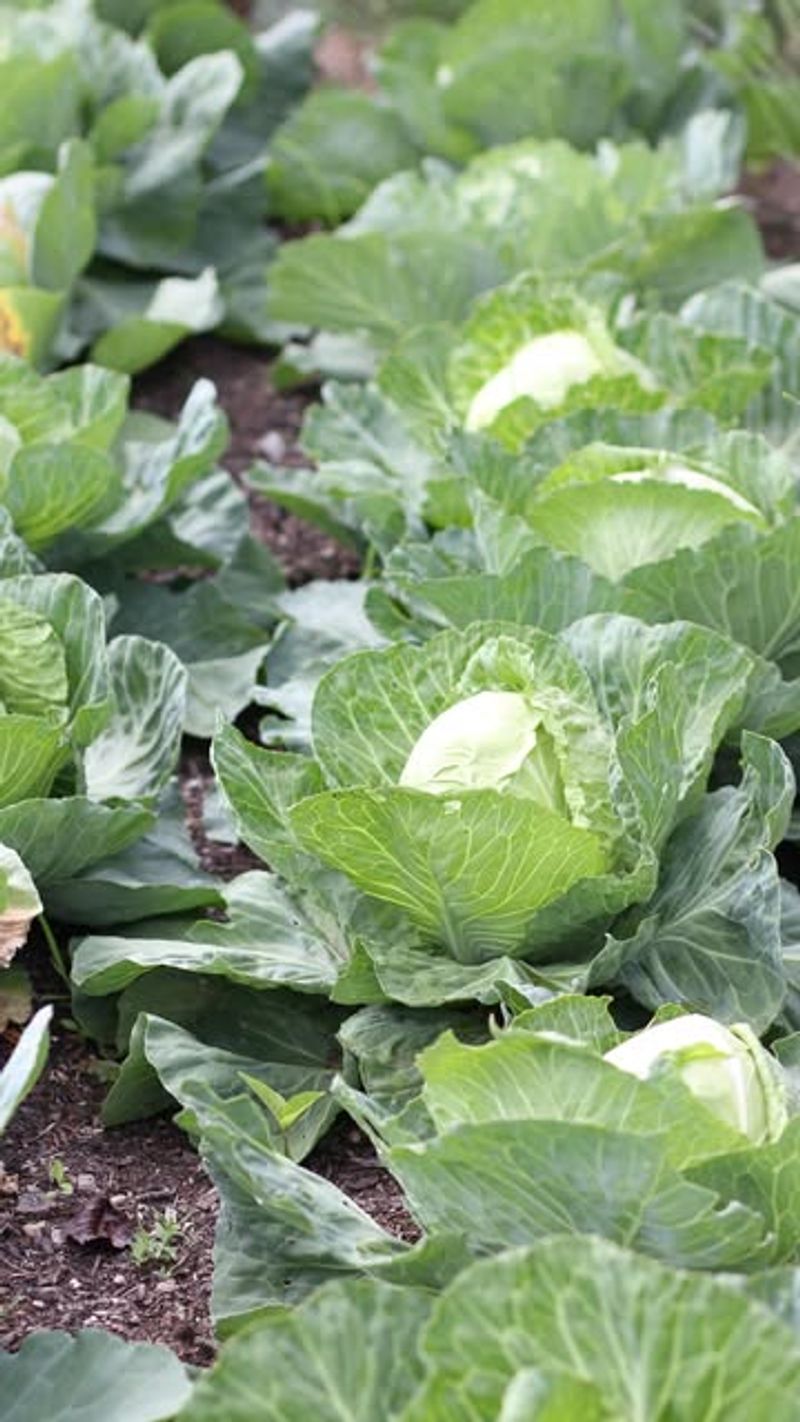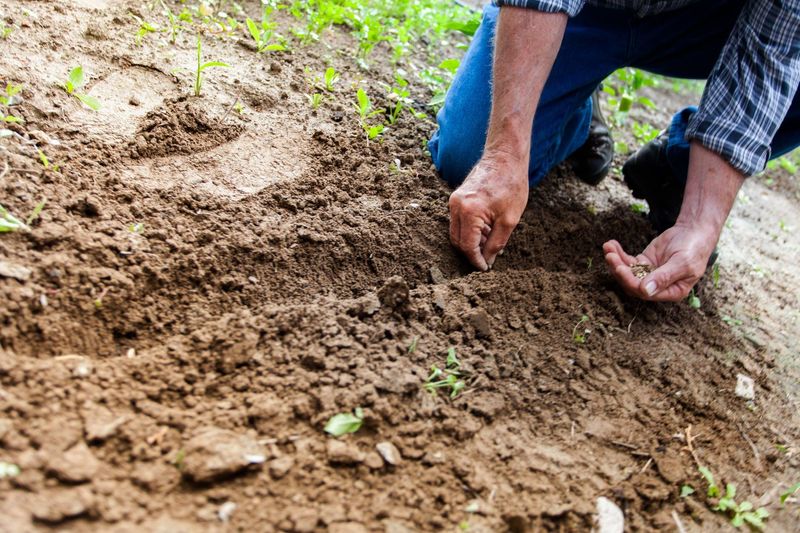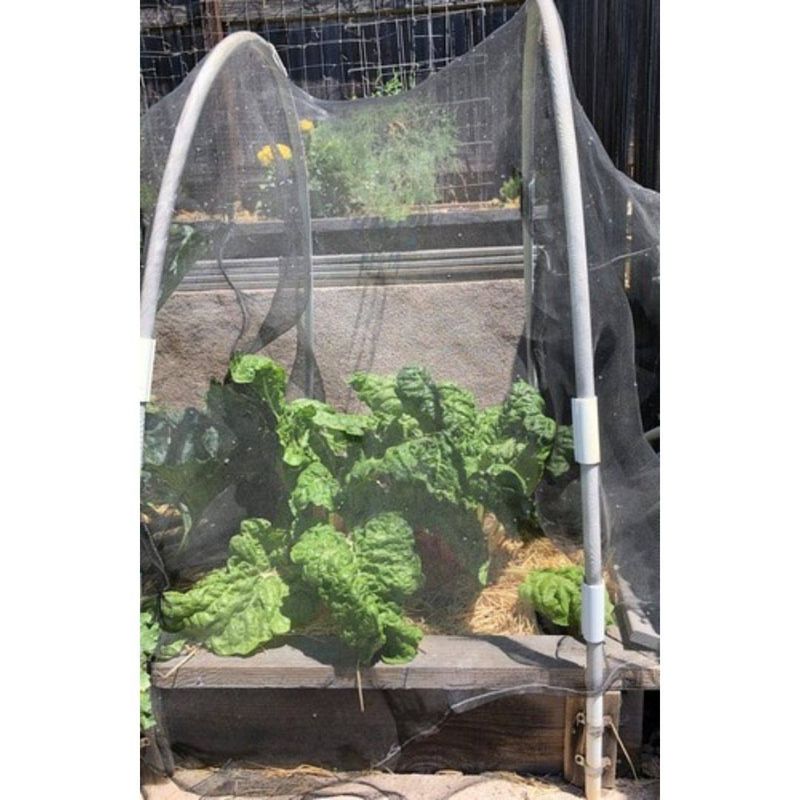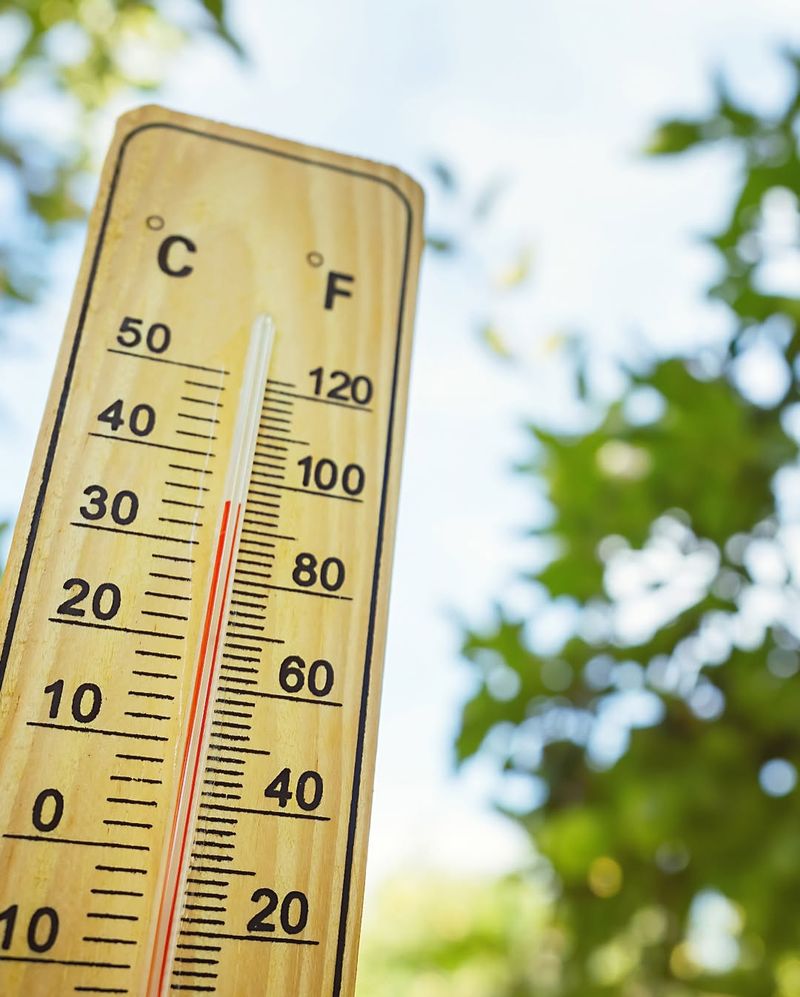Summer heat can sneak up on your garden fast. One week everything’s lush and blooming, and the next you’re wondering why your tomatoes look fried. I’ve made my fair share of hot-weather mistakes, like watering at the wrong time or forgetting to mulch—and trust me, plants notice.
When the sun is relentless, your usual routine might actually be doing more harm than good. Overwatering, under-shading, or even using the wrong soil mix can stress your plants out just when they need the most support. It’s all about working with the weather, not against it.
Once I started paying closer attention—watering early, shading the most sensitive plants, and protecting roots with mulch—things changed. Even in a heatwave, my garden stayed green and productive. A few smart shifts really can make all the difference.
1. Watering Only The Surface
Many folks sprinkle their gardens lightly each day, thinking they’re doing plants a favor. This shallow watering actually trains roots to stay near the surface where they quickly dry out in hot weather.
A better approach is deep, infrequent watering that encourages roots to grow downward where soil stays cooler and moisture lasts longer. I used to be a daily sprinkler until my tomatoes kept wilting despite regular attention.
Soak each plant thoroughly once or twice weekly, allowing water to penetrate 6-8 inches deep. You’ll know you’ve watered enough when the soil feels moist several inches down, not just at the surface.
2. Forgetting To Mulch
Bare soil in summer is like leaving your skin unprotected in the desert. Without mulch, soil temperatures can climb to plant-damaging levels while moisture evaporates at alarming rates.
Last summer, my unmulched vegetable beds required twice the water of my mulched flower gardens. The difference was striking – plants in mulched areas stayed perky while others struggled through afternoon heat.
Apply a 2-3 inch layer of organic mulch around plants, keeping it slightly away from stems. Straw, wood chips, or shredded leaves all work wonderfully to moderate soil temperature and retain moisture when temperatures climb.
3. Midday Watering Mayhem
Spraying water on plants during peak sunshine hours isn’t just inefficient – it can be harmful. Water droplets act like tiny magnifying glasses, potentially scorching leaves while most moisture evaporates before reaching roots.
Early mornings in the garden have become my favorite time. The peace is wonderful, and my plants respond noticeably better to dawn hydration than they ever did to afternoon drinks.
Water between 5-9am when possible, allowing plants to stock up on moisture before the day heats up. If morning isn’t possible, evening watering (avoiding wet foliage overnight) is your next best option.
4. Planting Without Planning For Shade
Summer sun in July and August hits differently than spring sunshine. Many gardeners underestimate how intense afternoon rays become, leaving heat-sensitive plants exposed during the most brutal hours.
After watching my lettuce bolt and herbs wither in previous summers, I started using taller plants as natural sunscreens. Corn creates perfect afternoon shadows for spinach, while trellised beans shield tender herbs from western exposure.
Consider adding temporary shade cloth structures during heat waves, especially for young plants or cool-season crops you’re trying to extend. Even 30% shade reduction can lower leaf temperatures by several crucial degrees.
5. Ignoring Container Plants’ Special Needs
Potted plants face double jeopardy during heat waves – not only are their leaves exposed to hot air, but their roots can literally cook inside containers. Dark pots especially can reach root-killing temperatures above 120°F.
My balcony garden taught me this lesson the hard way when I returned from a day trip to find crispy plants despite morning watering. Container gardens might need watering twice daily during extreme heat.
Consider double-potting or using light-colored containers that reflect rather than absorb heat. Moving pots to morning-sun-only locations during heat waves can save your container garden when temperatures soar.
6. Pruning During Heat Stress
Grabbing pruners during a hot spell can seriously harm your plants. Pruning stimulates new growth – tender shoots that are extremely vulnerable to heat and sun damage. Plants already working hard to survive don’t need the added stress.
One particularly hot July, I decided to “clean up” my tomato plants. The newly exposed stems sunburned badly, and the plants stopped producing for weeks while recovering from my poorly-timed haircut.
Save major pruning for cooler days or evenings if absolutely necessary. If you must remove something during hot weather, limit yourself to clearly dead material and wait for better conditions for major shape work.
7. Fertilizing At The Wrong Time
Adding fertilizer during intense heat can backfire dramatically. Plants under heat stress often slow their nutrient uptake, leaving fertilizer to accumulate and potentially burn roots. Many gardeners don’t realize their helpful boost is actually causing harm.
Years ago, I tried to perk up my struggling vegetables with a dose of liquid fertilizer during a heatwave. Within days, leaf edges browned and plants looked worse, not better.
Hold off on feeding during extreme temperatures. If you must fertilize in summer, choose early morning applications of half-strength solutions, and always water thoroughly first to reduce concentration near sensitive roots.
8. Overcrowding Heat-Stressed Plants
Packing plants too closely creates a humidity trap that can promote disease when temperatures soar. Proper spacing becomes even more critical in hot weather as plants compete for limited water and struggle to release heat.
The year I tried to maximize my tomato yield by planting twice as many plants, I ended up with half the harvest. Crowded conditions led to poor air circulation, disease issues, and smaller fruits across the entire patch.
Give each plant the space recommended on seed packets or plant tags – or even more in hot climates. Proper spacing allows cooling breezes to reach all parts of the plant and reduces competition for water when resources are limited.
9. Neglecting To Check Soil Moisture Deeply
The surface might look damp while deeper soil remains powder-dry. This misleads many gardeners into thinking plants have adequate moisture when roots are actually parched where it matters most.
After losing several young shrubs despite regular watering, I started using a simple soil probe (just a long screwdriver works great). Pushing it into supposedly moist soil often revealed it was only wet in the top inch or two.
Stick your finger or a soil probe at least 2-3 inches deep before deciding whether to water. For established plants, moisture should reach even deeper – 6-8 inches for many vegetables and perennials.
10. Planting Heat-Sensitive Varieties
Not all plant varieties handle heat equally. Choosing varieties bred for cooler climates sets your garden up for summer struggles no matter how carefully you tend it.
My first attempt at growing lettuce through summer was a spectacular failure – until I discovered heat-resistant varieties that didn’t immediately bolt when temperatures climbed. The difference was like night and day.
Look specifically for seed packets and plant tags mentioning “heat tolerance” or “heat resistant” for summer plantings. Many vegetables now come in specialized summer varieties – from tomatoes that still set fruit in high temperatures to lettuce that resists bolting in heat.
11. Letting Weeds Compete For Moisture
During hot spells, every drop of water becomes precious. Weeds are remarkably efficient at stealing moisture from your garden plants, often outcompeting them for limited resources when it matters most.
The contrast between my regularly weeded beds and those I neglected for just two weeks during summer vacation was eye-opening. The weed-free plants bounced back quickly after the heat, while the others struggled for weeks afterward.
Make a habit of light, frequent weeding rather than occasional major cleanups. A layer of mulch after weeding helps suppress new weed growth while conserving moisture – a double win during hot weather.
12. Forgetting To Monitor Container Drainage
Drainage holes can become blocked over time, creating a dangerous situation during summer downpours. What seems like adequate drainage in spring can turn containers into drowning pools after heavy rain followed by intense heat.
Last summer, my seemingly healthy potted peppers suddenly collapsed despite perfect care. When I checked, their containers had clogged drainage holes and soggy soil that had essentially cooked the roots in the heat.
Periodically lift containers to check their weight – they should feel significantly lighter after a few hours of drainage. Clear blocked holes with a screwdriver or dowel, and consider elevating pots slightly on feet or stones to ensure free water movement.
13. Skipping The Wind Protection
Hot, dry winds can dehydrate plants faster than high temperatures alone. Many gardeners focus exclusively on heat while overlooking the devastating effects of summer winds that literally pull moisture from leaves faster than roots can replace it.
After watching my beautiful hydrangeas crisp up on the windward side during a particularly dry, windy heatwave, I created a simple burlap screen. The protected plants recovered quickly while the exposed ones struggled for weeks.
Temporary windbreaks made from burlap, shade cloth, or even strategically placed patio furniture can dramatically reduce moisture loss during hot, windy periods. Focus protection on the prevailing wind direction during summer months.
14. Harvesting At Peak Heat
Picking fruits and vegetables during the hottest part of the day stresses both plants and produce. Cut stems and disturbed soil lose moisture rapidly in high temperatures, while harvested items deteriorate faster when picked warm.
My morning-harvested greens stay crisp hours longer than those I’ve picked midday. The difference is especially noticeable with delicate items like lettuce and herbs – morning harvests might last days longer in the refrigerator.
Schedule your harvesting for early morning when plants are naturally turgid and temperatures are cooler. If morning isn’t possible, wait until evening rather than harvesting during peak afternoon heat.
15. Wearing Out Your Soil
Depleted soil has less water-holding capacity and fewer nutrients available to help plants through stress periods. Many gardeners don’t realize their soil is becoming less resilient to heat with each passing season without proper care.
The summer after I started serious composting was a revelation. My enriched beds needed less frequent watering and plants showed remarkably less stress during hot spells compared to previous years in the same location.
Add organic matter regularly through compost, cover crops, or mulch that breaks down over time. Well-amended soil acts like a sponge, holding moisture longer near roots and providing slow-release nutrients that help plants withstand environmental stress.
16. Ignoring Early Warning Signs
Plants give clear distress signals before major damage occurs, but these subtle cues are often missed until it’s too late. Slight leaf curling, dull coloration, or slowed growth can all indicate heat stress well before wilting becomes obvious.
Watching my cucumber plants taught me to recognize their first response to heat – slightly curled leaf edges appearing by mid-morning. When I see this now, I know to provide afternoon shade rather than waiting for serious wilting.
Take a few minutes each morning to observe your garden carefully. Learn the specific ways your plants show early stress, and you’ll be able to intervene with water, shade, or other support before lasting damage occurs.
17. Forgetting About Yourself
While focusing on plant needs, gardeners often neglect their own safety in hot weather. Dehydration, heat exhaustion, and sunburn can happen surprisingly quickly when you’re absorbed in garden tasks.
My worst gardening mistake wasn’t about plants at all – it was working through midday heat without breaks, shade, or enough water. The resulting headache and dizziness kept me out of the garden for days afterward.
Garden during cooler morning or evening hours whenever possible. Wear a wide-brimmed hat, use sunscreen, and keep a large water bottle within easy reach. Taking care of yourself first ensures you’ll be able to care for your garden throughout the entire growing season.

